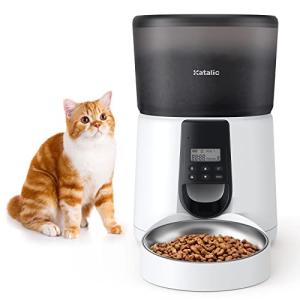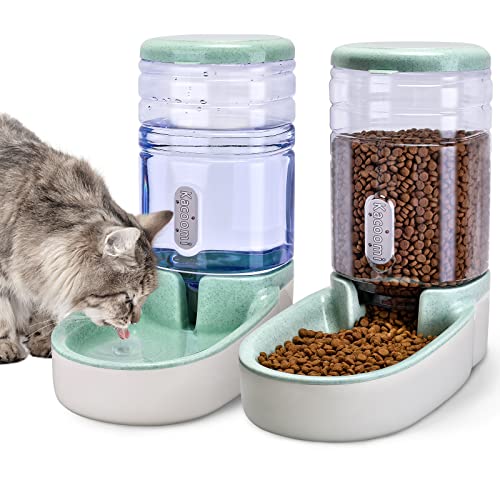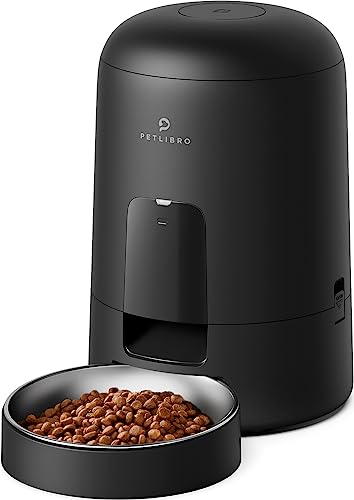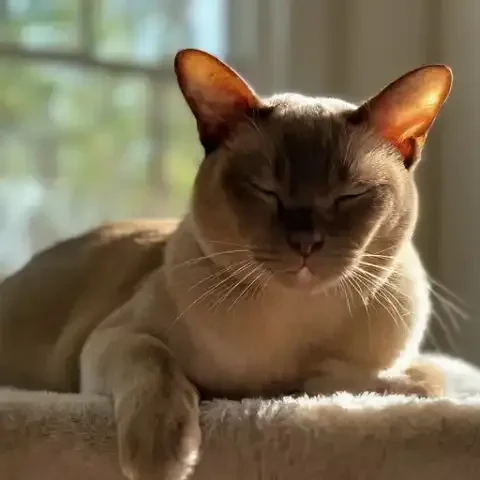The idea of a purring cat curled up on your lap, playful antics brightening your day – it's a truly wonderful image, one that captures the hearts of many considering pet ownership. Cats offer a unique kind of companionship, a blend of independence and affection, entertainment and quiet comfort. But before you rush out to adopt the first adorable kitten that catches your eye, pausing for thoughtful consideration is essential. It’s crucial to think not just about the joy a cat can bring to your life, but also what kind of cat will truly be the right cat for you, and equally importantly, what kind of home you can provide for them. Cats, despite their seemingly self-sufficient nature, are individuals with distinct needs, personalities, and temperaments. Choosing the right cat isn't simply about finding a cute pet; it's about embarking on a journey to create a harmonious and fulfilling long-term relationship, one that benefits both you and your feline companion. This article serves as your guide on this important journey, walking you through the key factors to consider as you navigate the delightful, but sometimes daunting, process of choosing a cat. We'll explore everything from assessing your own lifestyle and home environment to understanding different feline personalities, considering practical aspects of cat ownership, and finally, guiding you towards responsible sources where you can find your purrfect match. By thoughtfully considering these elements, you can move beyond the initial impulse of "cute" and make an informed, responsible decision that sets the stage for years of shared joy and unwavering companionship.
The first step in finding the right cat is to truly understand yourself and your current life situation. This is about honest self-reflection, assessing not just what you want in a cat, but what kind of life you realistically lead and the kind of home you can offer. Start by considering your lifestyle and your daily rhythms. Are you someone who thrives on activity, constantly on the go, or do you prefer a more relaxed and quieter pace of life? Your activity level plays a significant role in determining the kind of cat that will thrive in your home. If you're energetic, enjoy an active household, and are home relatively often, a playful, high-energy breed or a younger cat might be an excellent fit. Breeds like Abyssinians, Bengals, or Siamese, known for their intelligence and boundless energy, might become wonderful companions, eagerly participating in games, exploring their environment, and keeping you entertained with their antics. On the other hand, if you gravitate towards quieter activities, prefer a calmer home environment, and perhaps enjoy relaxing evenings on the sofa, a more laid-back breed or an adult cat with a mellow temperament might be a more harmonious choice. Breeds such as Persians, Ragdolls, or British Shorthairs, known for their gentle and placid natures, or even a senior cat seeking a peaceful retirement home, could bring a sense of serenity and quiet companionship into your life. Beyond your overall activity level, think about the amount of time you can realistically dedicate to a cat on a daily basis. Cat ownership extends far beyond simply providing food and water. It involves dedicated time for playtime, grooming (depending on the breed), and perhaps most importantly, interaction and attention. If you have ample time in your day to devote to a cat – time for interactive play sessions, grooming rituals, and simply enjoying their company – you might consider breeds known for being more attention-seeking or younger cats like kittens, who naturally demand more of your time and energy. However, if your schedule is packed, if you have long work hours or demanding commitments, you'll want to consider breeds known for being more independent or perhaps an adult or senior cat who is less reliant on constant interaction and more content with their own company during quieter periods. Your work and travel schedule also needs to be factored into your cat choice. If you work from home or are generally around for much of the day, a more social and attention-seeking cat might thrive, enjoying your constant presence and interaction. But if your job requires long hours away from home, or if you travel frequently, you need to consider a cat who is more independent, or perhaps even consider adopting two cats for companionship, ensuring they have each other's company while you are away. Regardless of breed, you'll also need to think about enriching their environment to keep them stimulated and happy when you are not home. Finally, reflect on the overall dynamics of your household. Is your home generally calm and quiet, a peaceful sanctuary? Or is it a bustling and energetic space, perhaps with children or frequent visitors? A calm and quiet home might be ideally suited for a shy or more reserved cat who appreciates a peaceful atmosphere. A more robust and adaptable cat might be a better fit for a bustling and energetic home, able to navigate the activity and occasional unpredictability with greater ease.
Beyond your lifestyle, consider your home environment itself. The type of living space you occupy and your approach to indoor versus outdoor life for a cat are crucial factors. Do you live in a small apartment or a spacious house? While most cats are incredibly adaptable and can thrive in apartment living, space considerations still play a role, particularly when thinking about energy levels. Even in a smaller apartment, providing vertical space is key – cat trees, shelves, and window perches can transform a limited square footage into a multi-level feline paradise, catering to their natural climbing instincts and expanding their perceived territory. If you live in a house, especially one with a yard, the question of indoor versus outdoor access arises. While the romantic image of a cat freely roaming a garden might be appealing, it’s crucial to honestly assess the safety implications. The consensus among veterinary and animal welfare professionals is overwhelmingly in favor of keeping cats as indoor-only pets. The dangers of outdoor life for cats are significant – traffic, predators (other animals, wildlife), exposure to diseases and parasites, and the risk of ingesting toxins are all constant threats. Indoor-only cats live significantly longer and healthier lives, shielded from these external hazards. If you desire to give your cat a taste of the outdoors, consider creating a secure catio – a cat enclosure – or harness training for supervised outdoor adventures. These options allow your cat to enjoy fresh air and sunshine safely, without the risks of free-roaming. If you already have pets in your home, careful consideration of compatibility is paramount. Introducing a new cat into a household with existing pets, particularly other cats or dogs, requires careful planning and patient, gradual introductions. For households with other cats, consider breeds known for their sociability with other felines, such as Ragdolls or Burmese, who are generally known to be more accepting of feline companions. For homes with dogs, look towards breeds like Maine Coons or American Shorthairs, often cited as being more dog-friendly, though individual cat personalities always vary. Regardless of breed, slow and carefully managed introductions are absolutely essential to ensure a positive and harmonious integration process, minimizing stress for all animals involved. If you have smaller pets like birds, rodents, or reptiles, you must consider a cat's natural prey drive. Some breeds have inherently higher prey drives than others and might pose a greater risk to smaller animals. Careful management and secure housing for smaller pets will always be necessary in a multi-species household.
If you have children in your family, their compatibility with a cat is a vital consideration. Certain cat breeds are renowned for their gentle and patient nature, making them wonderful companions for children. Breeds like Ragdolls, Maine Coons, American Shorthairs, and British Shorthairs are often cited as being particularly good choices for families with children, known for their tolerance and playful, yet gentle, interactions. However, breed is only one part of the equation; individual cat personalities vary significantly, and even within generally child-friendly breeds, you'll find individual differences. Crucially, regardless of the breed or individual cat's personality, educating children on how to interact respectfully and gently with cats is absolutely essential. Children need to understand a cat's body language, learn to recognize signs of stress or discomfort, and be taught to approach and handle cats with gentleness and respect. Supervising interactions between children and cats, especially younger children, is always recommended to ensure the safety and well-being of both child and cat. When considering adding a cat to a household with children, also weigh the pros and cons of kittens versus adult cats. Kittens, while undeniably adorable, require more supervision and can be more fragile, needing patient and gentle handling from children. Adult cats, particularly those adopted from shelters, often have established personalities that are easier to assess, making it easier to gauge their suitability for a family environment with children. Adult cats may also be calmer and more tolerant of the sometimes-unpredictable energy of children.
Beyond lifestyle and home environment, delve into the realm of feline personalities. What kind of feline companion are you truly seeking? Consider the temperament traits that are most important to you. Are you longing for an affectionate and cuddly cat, a true “lap cat” who will shower you with affection and crave physical closeness? If so, breeds like Ragdolls, Persians, Sphynx, Burmese, or Tonkinese, all known for their demonstrably affectionate natures, might be wonderful choices. Or perhaps you prefer a more independent cat, one who is content with their own company, less demanding of constant attention, and more self-sufficient. If independence is appealing, consider breeds like British Shorthairs, Russian Blues, or some American Shorthairs, all known for their more independent streaks. If you’re looking for a lively and entertaining companion, one who will fill your home with playful energy and keep you amused with their antics, a playful and energetic breed is the way to go. Abyssinians, Bengals, Siamese, Japanese Bobtails, or Cornish/Devon Rexes are all known for their playful and high-energy personalities. Conversely, if you prefer a serene and peaceful home environment and seek a calm and quiet feline companion, breeds like Persians, Ragdolls, or British Shorthairs, all known for their placid demeanors, would be better suited to a quieter lifestyle. Vocalization is another personality trait to consider. Are you comfortable with a vocal cat, one who “talks” frequently and uses their voice to communicate? If you enjoy feline conversations, breeds like Siamese, Tonkinese, Burmese, or Oriental Shorthairs, all known for being quite vocal, might be appealing. If you prefer a quieter companion, breeds like Persians, Ragdolls, British Shorthairs, or Maine Coons (generally less vocal) might be more aligned with your preferences. Remember also, that shelter cats and mixed-breed cats offer an incredibly diverse range of personalities. Adopting an adult cat from a shelter allows you the invaluable opportunity to assess their individual personality firsthand, interacting with them and getting to know their temperament before making a commitment.
Grooming preferences are a practical consideration not to be overlooked. Are you prepared for the daily grooming demands of a long-haired cat, or do you prefer the low-maintenance ease of a short-haired breed? If minimal grooming is your preference, short-haired breeds like Siamese, Abyssinians, Bengals, American Shorthairs, Burmese, Russian Blues, or even the hairless Sphynx (though Sphynx require skin care, not coat grooming) are excellent choices. If you are willing to devote a bit more time to grooming, but still prefer a relatively manageable routine, short-to-medium haired breeds like Japanese Bobtails or British Shorthairs, requiring brushing a few times a week, might suit your lifestyle. If you genuinely enjoy grooming rituals and are prepared for the daily commitment of brushing to prevent mats and tangles, then long-haired breeds like Persians, Maine Coons, Ragdolls, Himalayans, or Turkish Angoras, with their luxurious and demanding coats, could be a rewarding choice. Energy levels are another key practical consideration. Are you prepared to provide ample exercise and playtime for a high-energy cat, or do you prefer a more laid-back companion with lower exercise needs? For those seeking an active and engaging companion, high-energy breeds like Abyssinians, Bengals, Siamese, Oriental Shorthairs, or Cornish/Devon Rexes will provide plenty of playful entertainment. If you prefer a more moderate energy level, breeds like Maine Coons, Japanese Bobtails, British Shorthairs, American Shorthairs, Burmese, Tonkinese, or Ragdolls offer a balance of playfulness and calm. If you are seeking a truly low-energy companion, breeds like Persians, or perhaps considering adopting an older cat of any breed (as senior cats naturally become less active), might be a better fit for a quieter lifestyle.
Finally, consider the age of the cat you are hoping to welcome into your home. Kittens are undeniably adorable, brimming with playful energy and youthful charm. However, kittens also require a significant investment of time, patience, and energy. They need consistent training, socialization, and supervision, and their high energy levels and propensity for mischief are not for everyone. Adult cats offer a wonderful alternative. Their personalities are generally more established and predictable, making it easier to assess compatibility. Adult cats are often calmer than kittens, and many are already litter-trained and understand basic household routines. Adopting an adult cat, particularly from a shelter, can be an incredibly rewarding experience, giving a deserving cat a loving home. Senior cats, often overlooked in shelters, are truly deserving of love and companionship in their golden years. While they may have lower energy levels and potentially require more specialized veterinary care, senior cats offer instant companionship, often are incredibly affectionate, and bring a gentle serenity to a home. Remember, breed traits are general guidelines, not guarantees. Individual cats within any breed can vary significantly in personality and temperament. When adopting a cat, especially from a shelter or rescue, focus on getting to know the individual cat's personality, interacting with them, and assessing their temperament firsthand, rather than relying solely on breed generalizations.
Beyond personality and lifestyle compatibility, practical considerations are essential. Ensure your living space is truly cat-friendly. This means providing scratching posts to satisfy their natural scratching instincts and protect your furniture, offering climbing structures and cat trees to cater to their desire for vertical space, creating safe hiding places where they can retreat and feel secure, and providing access to window perches for observation and mental stimulation. Cat-proofing your home is crucial, especially for kittens and curious breeds. Secure electrical cords, store cleaning supplies safely, remove toxic plants and small objects that could be ingested, and ensure balconies or high windows are secure. Budgeting for the real cost of cat ownership is vital. Initial costs include adoption fees or breeder costs, the initial veterinary visit and vaccinations, spaying or neutering, microchipping, and essential supplies like a carrier, food and water bowls, a litter box and litter, scratching posts, a bed, and toys. Ongoing costs include high-quality cat food, litter, regular veterinary care (annual check-ups, vaccinations, parasite prevention), and the potential for unexpected veterinary bills. Consider pet insurance to help manage potential unexpected healthcare costs. And finally, remember the significant time commitment. Daily care involves feeding, providing fresh water, cleaning the litter box, engaging in playtime, grooming (if needed), and providing consistent interaction and attention. Factor in time for annual veterinary visits and potential sick visits. Cat ownership is a long-term commitment, often spanning 12-15 years or even longer – be prepared for this enduring responsibility.
If allergies are a concern, understand the facts about “hypoallergenic” breeds. Cat allergies are common, and it's crucial to be realistic about managing them. It's important to know that no cat breed is truly hypoallergenic. The primary cat allergen, Fel d 1 protein, is produced by all cats, though some breeds produce less of it. Breeds often cited as “lower allergy” include Sphynx, Siberian, Balinese, Devon Rex, Cornish Rex, and Russian Blue. If allergies are a concern, consider spending time with the breed you are interested in before committing to ownership to assess your reaction. Allergy management strategies can include using air purifiers, frequent vacuuming, limiting carpet, washing hands after petting, and considering allergy medication or allergy shots for yourself. Consult with an allergist to discuss the best approach for managing cat allergies in your specific situation.
When you're ready to find your purrfect cat, consider responsible sourcing. Adoption from shelters and rescues is a profoundly rewarding option. You’ll be saving a life, often adoption fees are lower than breeder costs, and shelters are full of wonderful cats of all ages, breeds, and personalities, including many adult cats whose personalities are already known and readily assessed. Visiting local shelters and rescue organizations, or exploring websites like Petfinder or Adopt-a-Pet, can connect you with countless deserving cats in need of loving homes. If you are set on a specific breed and desire a kitten from a known lineage, choosing a reputable breeder is essential. Research breed clubs to find breeder referrals, ask breeders for veterinary references, and always visit the breeder's home or cattery to assess the environment and the health and socialization of the kittens. Be wary of breeders who always have kittens immediately available, who don’t allow home visits, or who seem primarily motivated by profit. Reputable breeders prioritize the health and temperament of their cats, health test their breeding animals for breed-specific genetic conditions, and often offer health guarantees for their kittens. Whether you choose adoption or a breeder, meeting and interacting with potential cats before making a final decision is vital. Observe their personality, temperament, and how they interact with you and others. Trust your instincts and choose a cat whose personality and energy level feel like a good fit for your lifestyle and home.
Choosing the right cat is a deeply personal and important decision, one that requires thoughtful self-reflection, careful consideration of practical factors, and a genuine desire to provide a loving and fulfilling home for a feline companion. By recapping the key considerations – aligning your lifestyle and home environment, matching personalities and temperaments, acknowledging the practicalities of cat ownership, and prioritizing responsible sourcing – you are well-equipped to embark on this exciting journey with informed awareness and an open heart. Remember, the rewards of cat ownership are immeasurable. Cats bring joy, love, companionship, and a unique kind of magic into our lives. Take your time, do your research, trust your instincts, and choose a cat that is truly the right fit for you. The purrfect cat for you is out there, waiting to be found. By carefully considering your lifestyle, personality preferences, and practical factors, you can make a truly informed decision and welcome a wonderful new member into your family. Embark on this exciting journey and get ready to experience the unique joy of cat companionship for years to come. Happy cat searching!







